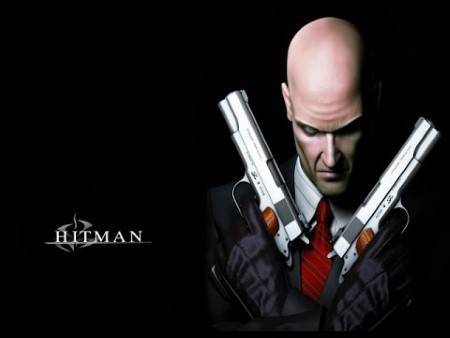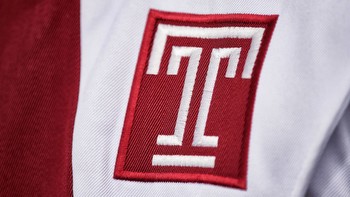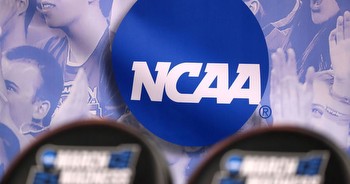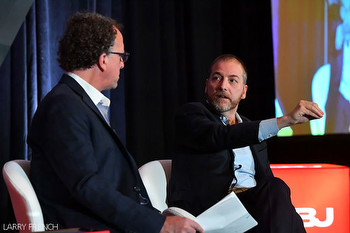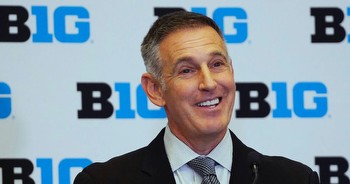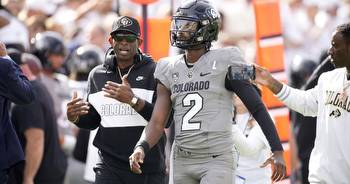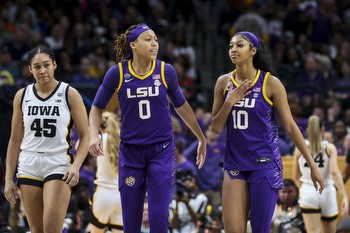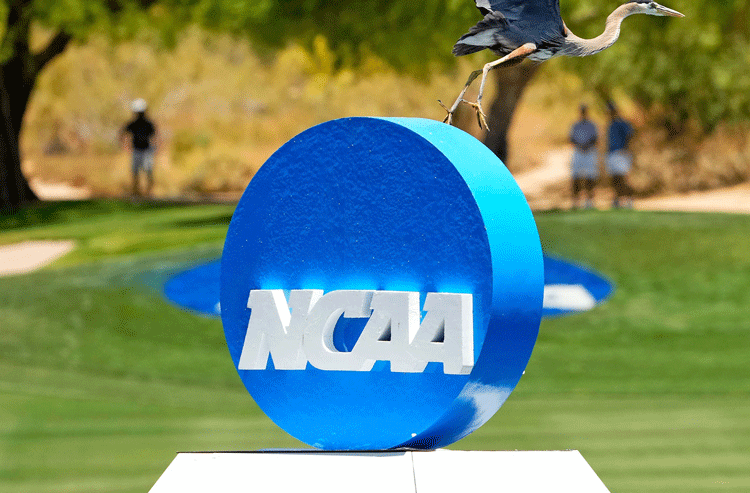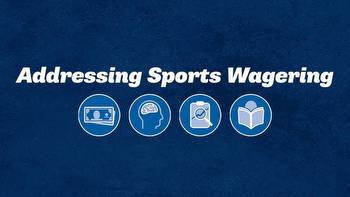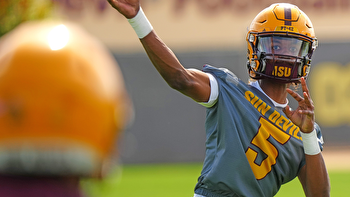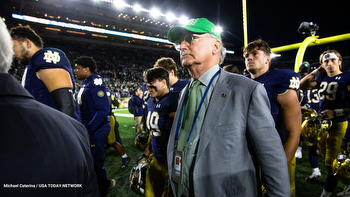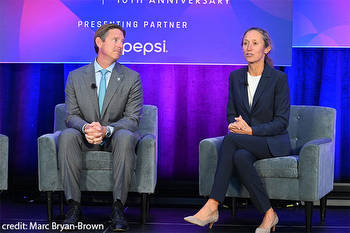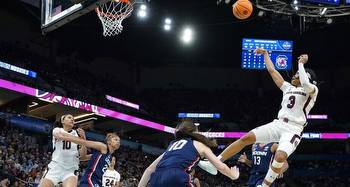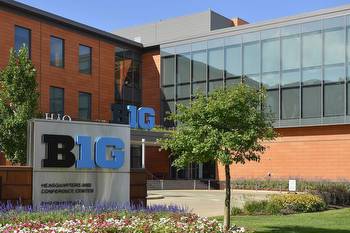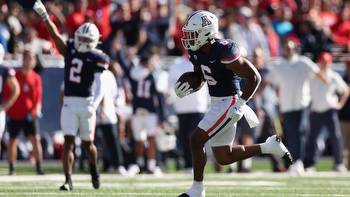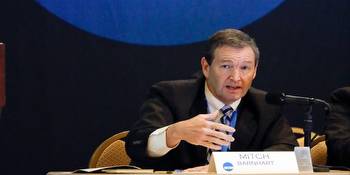NCAA releases state-of-business review: What’s next for media rights deal?

The NCAA announced on Wednesday the completion of the state-of-business review commissioned earlier this year by new president Charlie Baker. The review identified the biggest challenges in front of college athletics and made some general suggestions for how to approach them.
The business review, produced by Bain & Company, included the following takeaways:
- Colleges and universities are facing enrollment issues, stemming from the continuing decline of the college-age population and the rising costs of college attendance, which will affect incoming revenue.
- College sports face challenges tied to viable alternate career options for athletes to be paid for playing their sport (such as the NBA G League, Overtime Elite, etc.) as well as traditional media partners experiencing “an existential threat to their business.”
- Athletes feel stress from social media, sports betting and other outside influences. The report recommended that the NCAA build on its mental health best practices and share information among schools.
- The “widening gap between different strata of Division I resources and capabilities” is notable and needs to be addressed.
- Citing the NIL landscape’s lack of accountability and lack of consumer protections for athletes, the report recommended that the NCAA “put an accountable and transparent framework in place on NIL before the end of the year.”
- The review recommended that the NCAA be more market-driven with its championships in terms of sponsorships, premium seats and ticket pricing, among other areas of what it calls “untapped potential for growth.”
- The report suggested that the NCAA schools work collectively to improve recruiting, development and scheduling for officiating. The topic is a concern in all sports, with an aging population of officials and a pipeline that is drying up because of officials’ treatment by fans and teams.
The business review also found that, with its media rights bundle going out to bid next year, the NCAA has an opportunity to “restructure the digital and sponsorship rights tied to Division I men’s basketball making it possible to dramatically expand media and digital content and sponsorship for women’s championships.” The contract expires at the end of the 2023-24 academic year.
What’s next for the NCAA’s media deal?
The NCAA has not yet made a decision on whether or not to un-bundle certain sports’ championships from the rest. Currently, the NCAA women’s basketball tournament is part of a packaged media deal with ESPN, worth roughly $34 million per year, to broadcast all of the Division I championships except FBS football, men’s basketball (the domestic rights for which belong to CBS and Turner) and men’s and women’s golf.
Experts have speculated that the women’s tournament would bring enough value on its own to justify spinning it off as a separate media rights package. The 2021 Kaplan report, citing an independent analysis by media experts, suggested that the women’s tournament on its own was greatly undervalued and could be worth as much as $112 million annually by 2025. Others in the industry have disputed that number. During a Final Four weekend that set viewership records, Baker said it was “perfect” timing for the women’s basketball rights to come up — and for the NCAA to make a decision about whether or not to spin it off. Some athletic directors have also asked that other growing sports, such as baseball, softball and women’s volleyball, receive similar consideration.
Charlie Baker’s next steps
Commissioning the state-of-business review was one of the first items on Baker’s to-do list upon taking office. The completion of that goal and his ongoing quest to meet with every conference across Divisions I, II and III should give him a better understanding of the landscape he’s working with.
The internal office and structural recommendations made within the review will surely be implemented to streamline communication and efficiency within the NCAA’s national office. But beyond that, Baker should feel empowered to act on some of the topics on which he received feedback, such as directing certain NCAA committees to draft and enact legislation around NIL (even though it may be challenged later in court) and introducing national officiating recruiting plans.
Baker’s approach to the media rights negotiations will be another pivotal moment for the first-year NCAA president. So are his continued efforts to get federal NIL legislative help. He has been methodical on many issues in his early leadership of the NCAA, but expect him to keep pushing for movement there in the coming weeks and months, before the calendar turns to an election year.
